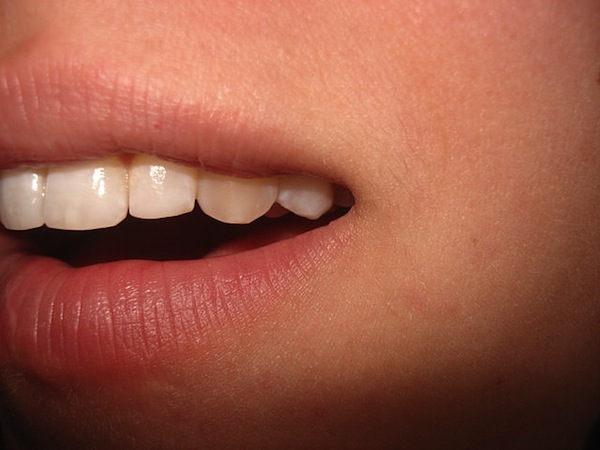Why Women Like Deep Voices and Men Prefer High Ones
We find different pitches attractive because of the body size they signal—and a touch of breathiness is crucial to take the edge off deep voices in men
![]()

We find different pitches attractive because of the body size they signal—and a touch of breathiness is crucial to take the edge off a man’s deep voice. Image via Flickr user linda
Who you’re physically attracted to might seem like a frivolous, random preference. In recent years, though, science has told us that our seemingly arbitrary tastes often reflect unconscious choices that are based upon very relevant biological traits.
In general, we find symmetric faces more attractive, likely because they reflect a healthy underlying genome. Women typically prefer men with more distinctively masculine facial features because they indicate high testosterone levels and physical strength, while men prefer women with exaggerated youthful features, possibly because of the evolutionary advantages a male gets when coupling with a younger mate.
Despite all this research into our visual appearances, though, scientists have done relatively little digging into our auditory preferences when it comes to sexual attraction. Why do we find certain peoples’ voices attractive–and why do we sometimes find other types of voices such a turn-off? Specifically, why do women generally prefer men with deep voices, and men prefer women with higher ones?
At least according to a paper published today in PLOS ONE, the explanation is relatively simple: It’s all about body size. Researchers from University College London found that, at least among a sample of 32 participants, high-pitched female voices females were found to be attractive because they indicated the speaker had a small body. Deep male voices, on the other hand, were judged as more attractive because they conveyed that the speaker had a large frame—but were found to be most attractive when tempered by a touch of “breathiness,” suggesting the speaker had a low level of aggression despite his large size.
The group, led by Yi Xu, figured this out by playing recordings of digitally manipulated voices to the participants. The males in the study heard a computer-generated female voice saying phrases such as “I owe you a yo-yo” in which the voice was manipulated with a number of digital alterations in terms of pitch, formant (the particular peaks and valleys in a sound’s frequency spectrum) and other qualities.
The specific manipulations either conveyed a smaller body size or a larger one, based upon previous research that matched various voice qualities with different body sizes in humans. When asked to rate the voice’s attractiveness on a 1 to 5 scale, the men preferred the voices that suggested a smaller female. Past a certain point, though, higher voices were judged as no more attractive that slightly deeper ones. Listen to the most and least attractive (both, admittedly creepy) voices below:
The female participants’ voice preferences were similar, but slightly more nuanced. On the whole, they preferred deeper voices, which signaled a large body size, but another trait was also crucial: “breathiness.” The researchers hypothesized that this breathiness effectively takes the edge off a voice, making a man with a presumed large frame seem less aggressive and angry. They also polled the participants on whether they thought the simulated voices sounded angry or happy, and the breathy deep males voices were generally perceived as much happier and less angry than the less breathy (i.e. “pressed”) deep ones. Listen to the most and least attractive male voices below:
Beyond explaining the popularity of Barry White, the researchers say these findings correspond to much of what we know about voice preferences in the rest of the animal kingdom. Birds and other mammals, it turns out, have long been known to advertise their physical characteristics via the sound qualities in their mating calls.
All this points to an obvious question, though: Why would males prefer smaller females, and females prefer larger males in the first place? The researchers don’t attempt to address this question, but this duality reflects the sexual dimorphism present in most animal species. These differences generally result from sexual selection giving incentive to different mating strategies—so in this case, our voice preferences suggest that women benefit, in evolutionary terms, by mating with larger, but less aggressive men, while males benefit from mating with smaller females.
As the same time, what we commonly consider attractive varies dramatically over time and location—for example, dozens of prehistoric “Venus figurines,” discovered all over the world, portray extremely voluptuous female figures. So, if we tested the preferences of all humans throughout history, we might find a less obvious trend. This preference for small-voiced females and big-voiced males, then, might simply be an artifact of our contemporary cultural concepts of “attractiveness,” rather than a deep-seated evolutionary choice after all.
/https://tf-cmsv2-smithsonianmag-media.s3.amazonaws.com/accounts/headshot/joseph-stromberg-240.jpg)
/https://tf-cmsv2-smithsonianmag-media.s3.amazonaws.com/accounts/headshot/joseph-stromberg-240.jpg)